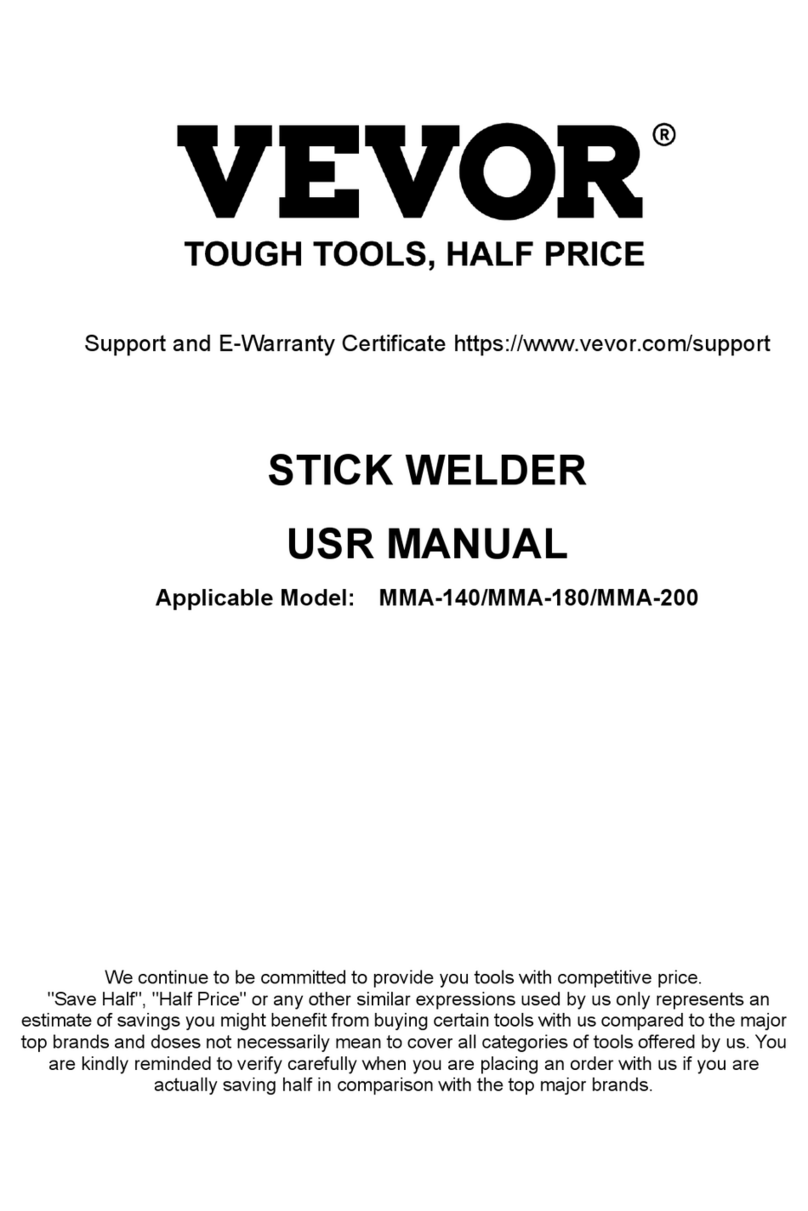
1. Current display meter
The digital ammeter is used to display the actual output current of the power source.
2. Power indicator light
Turn on the power, and this light will be on.
3. Fault light
When the welding load is overloaded and the output current of the machine is too large, this light will be on.
This situation is normal and the machine can recover itself. When there is damage inside the machine, this light
will be on. In this case, the machine is abnormal and requires maintenance.
4. Adjust the value knob
Clockwise rotate the knob to enlarge the current, and anti-clockwise rotate the knob to reduce the current.
5. Cutting gun cable and gas connection seat
Remove the black cap and connect the cutting gun.
6. Cutting gun control socket
That is two-core aviation socket. The cutting gun triggers switch to control connection.
CUT50/CUT50P
Please check the exterior of the whole
machine to ensure there is no scratch
or damage, and the machine can be
CUT50:L=4m SG55 Cutting gun.
CUT50P:L=5m AG-60 Cutting gun.
L=2M , 10mm² Copper Clad Aluminum
Wire; Rubber Jacket + 300A
Ground Clamp
Ground Clamp
SG55/AG-60
Cutting gun
7. Negative Welding Terminal
Welding current ows from the power source to heavy duty bayonet type terminals. It is essential that the male
plug is securely inseed and turned to achieve a sound electrical connection.
INTRODUCTION TO THE PRODUCT AND CONFIGURATION LIST
04





























